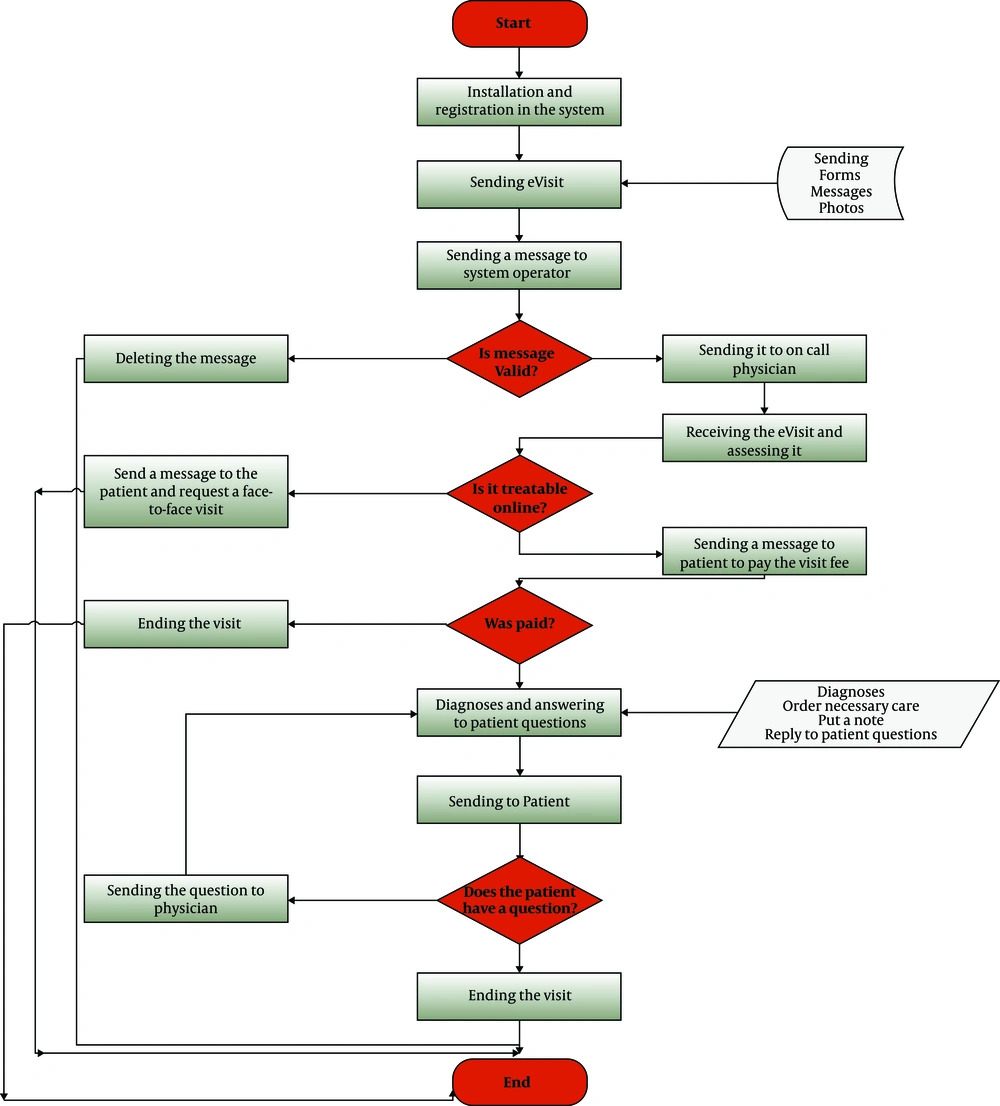Dear Editor,
One of the main contributors to the coronavirus disease 2019 (COVID-19) outbreak is the human-to-human transmission (1, 2). Thus, governments have tried to control COVID-19 by preventing congestion via shutting down many service centers. One of the very crowded places in Iran is physician offices and clinics. However, providing services in these places is allowed in some cases with specific conditions. To prevent congestion in physician offices and clinics, electronic visit (eVisit) can be a secure way.
eVisit is a specific part of telehealth (3, 4), which provides the condition for a virtual relationship between patients and physicians through the internet (5). Using eVisit can reduce unnecessary patient visits to offices, travels, and costs (6-9). In the current conditions in the world, many people with other diseases (except for COVID-19), especially chronic diseases, need to be visited to check their condition, but some of these needs can be resolved through eVisit. In Iran, there are appropriate infrastructures and high levels of internet users, with an internet penetration rate of 70% by January 2020 (10); thus, eVisit can be a good choice. Although there are many social networks such as Telegram and WhatsApp to make contact, some of the physicians’ and patients’ rights are ignored in these tools.
In this paper, we propose an eVisit data flow diagram (DFD), which can be used for developing and using eVisit in controlling the COVID-19 outbreak. Figure 1 shows the DFD for eVisit, designed based on the patient and physician needs according to previous studies (8, 9, 11) and considering the conditions and infrastructures of Iran.
In this model, all patients and physicians’ rights are considered, such as the ability to ask many questions, send any type of data, and use a secure website by patients. Also, this eVisit model has many advantages for physicians, such as determining the valid requests before sending them to the physician, easy answering of the questions, and the online payment system.
Due to the mentioned advantages of eVisit, it is proposed to use it for providing some primary and unnecessary healthcare services during the outbreak even after its controlling. Easy design and development of websites, high accessibility of the internet, and the high number of internet users in Iran are the main contexts of using eVisit, and this model can be used to design and develop eVisit websites as a standard, regardless of the type of medical specialty.
